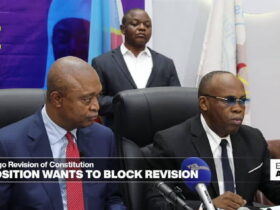Before India’s courts and federations took the spotlight, the heart of Indian football lay on its local grounds.
“Earlier, a player in Mumbai could play 100, 120 matches in an entire season,” Henry Menezes, a former India goalkeeper and longtime football administrator, told DW. “Competitive matches, local grounds, different tournaments – he had a choice of where to play.”
That system was once the backbone of Indian football. District and state leagues fed into national tournaments, and professional players could advance step by step – from district clubs to state teams and eventually to the national setup.
The Indian Super League (ISL) changed all that when it broke away from the national system more than a decade ago. It is moving further away from the base of the pyramid that once produced its players. Now, with the ISL on the verge of collapse, Indian football is at a crossroads.
A league is in limbo
This summer, India’s Supreme Court stepped into football’s biggest battle. It ordered the All India Football Federation (AIFF) to run an open tender for the commercial rights of the Indian Super League, ending a decade-old exclusive arrangement with its private operator.
The order came after months of uncertainty that led to the 2025-26 season being put on hold, clubs delaying payments and talks led by the league stalling. The federation has set a deadline of October 15 for new bids to run the competition. If he fails, India’s top division could lose the entire season.
Launched in 2014 as a franchise-style competition, the ISL brought in global stars and sponsorship money but created a parallel system outside the traditional football ladder. Its 15-year commercial deal with Football Sports Development Limited (FSDL) – a venture between Reliance and Star India – expires next year. Negotiations on renewal stalled and the dispute reached court.
Menezes says the confusion reflects a deeper structural difference. “In one column there is the Indian Olympic Association and in the other column there are federations,” he said. “We really have to merge and get into the right structure of things to move forward. That’s one of the reasons why everything went haywire with the ISL stopping.”
For now, the court order for open tender means rescheduling is inevitable – but what it will look like is unclear.
Politics, legacy of power and control
This governance crisis is the latest chapter in a troubled game in India. Many senior AIFF and state officials also hold political office, blurring the line between governance and influence. In 2022, the football federation was suspended by FIFA for “third party interference”.
Former India captain Bhaichung Bhutia has called the federation “completely rotten”.
Menezes adopts a more measured tone but does not deny that politics plays a major role. “The federation has become more professional,” he said, noting improvements in management structures. “In politics a leader can bring big tournaments and make things easier. Yet, the same system slows down change.”
a broken pyramid
Before considering the future of the ISL, it would be appropriate to consider that its greatest legacy may be the broken relationship between the grassroots and the professional game. “A district champion can’t go beyond the district,” Menezes said. “There is no upgrade.”
At the same time, participation among children has exploded. “At the grassroots level we talk about baby leagues where the participation of children aged 9 to 17 in football has increased manifold,” Menezes added. “It’s become a business in itself. Every kid wants to play football.”
This divide creates a paradox: the sport has never been more popular, yet the pathways for young players to climb the ladder are blocked. Private academies and independent coaches have filled the gap that was once managed by clubs and state associations.
What next for ISL?
Some people expect the ISL to disappear. The federation and its commercial partners have strong incentives to negotiate a new deal. Menezes believes that no matter who the new deal is with, it should be different from the previous one.
“We need professionals,” Menezes said. He said that the federation alone lacks the marketing expertise to make the league viable. The former player also believes that the introduction of promotion and demotion will further increase accountability.
The time has come for Indian football to make the game the deciding factor on the field and re-establish trust with community clubs, where thousands of supporters come to support, says Menezes. While this is true for clubs like Kerala Blasters or Mohun Bagan, many others have struggled to bring in large crowds as most football fans in the country prefer to watch the English Premier League rather than domestic games.
AIFF’s tender process will decide whether the league restarts soon or the reforms completely reshape its model. Menezes believes the goal should be simple: professionalism guided by structure, and governance balanced by transparency.
“The federation needs professionals who understand business and investors must respect the football structure,” he said. “If the two come together, India can eventually create a sustainable league.”
“This is a chance to fix what was missing. If we get it now, Indian football can finally start moving in a direction – forward.”
Edited by: Jonathan Harding






Leave a Reply